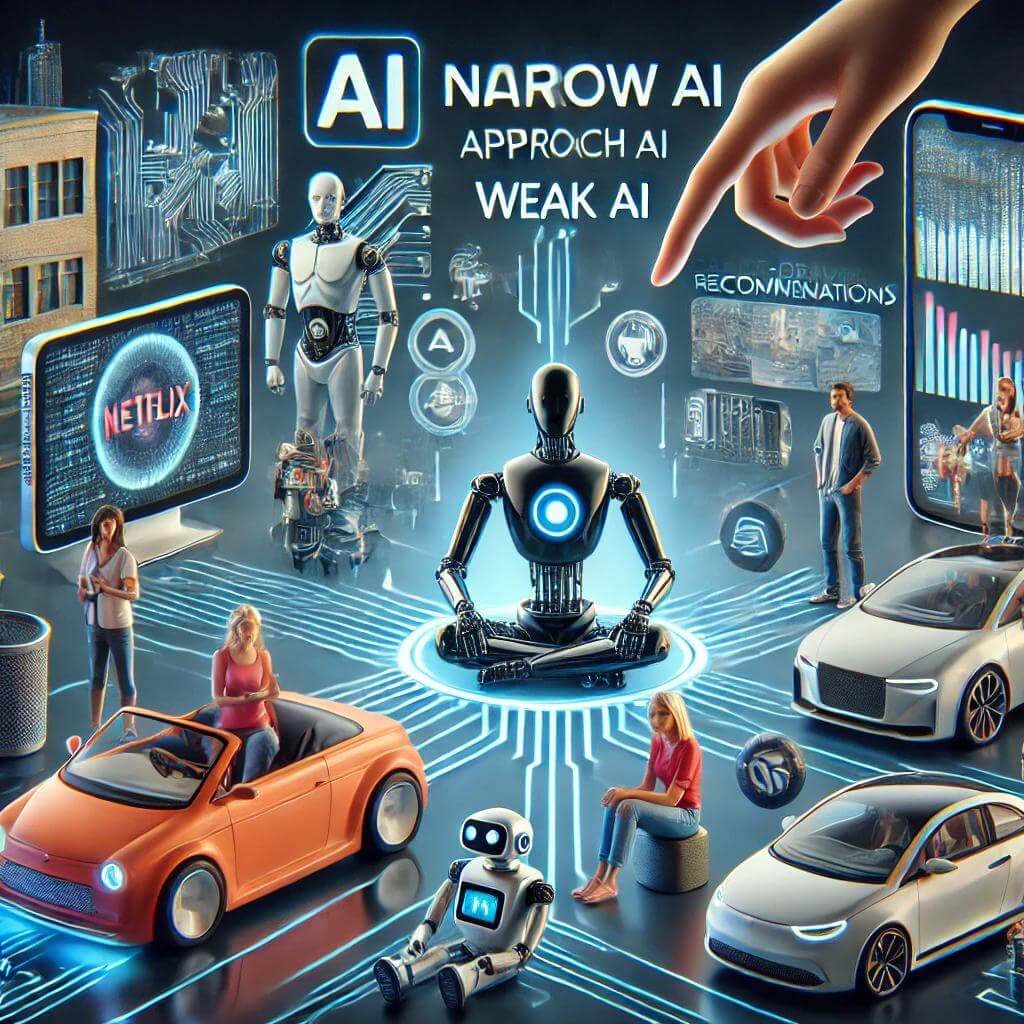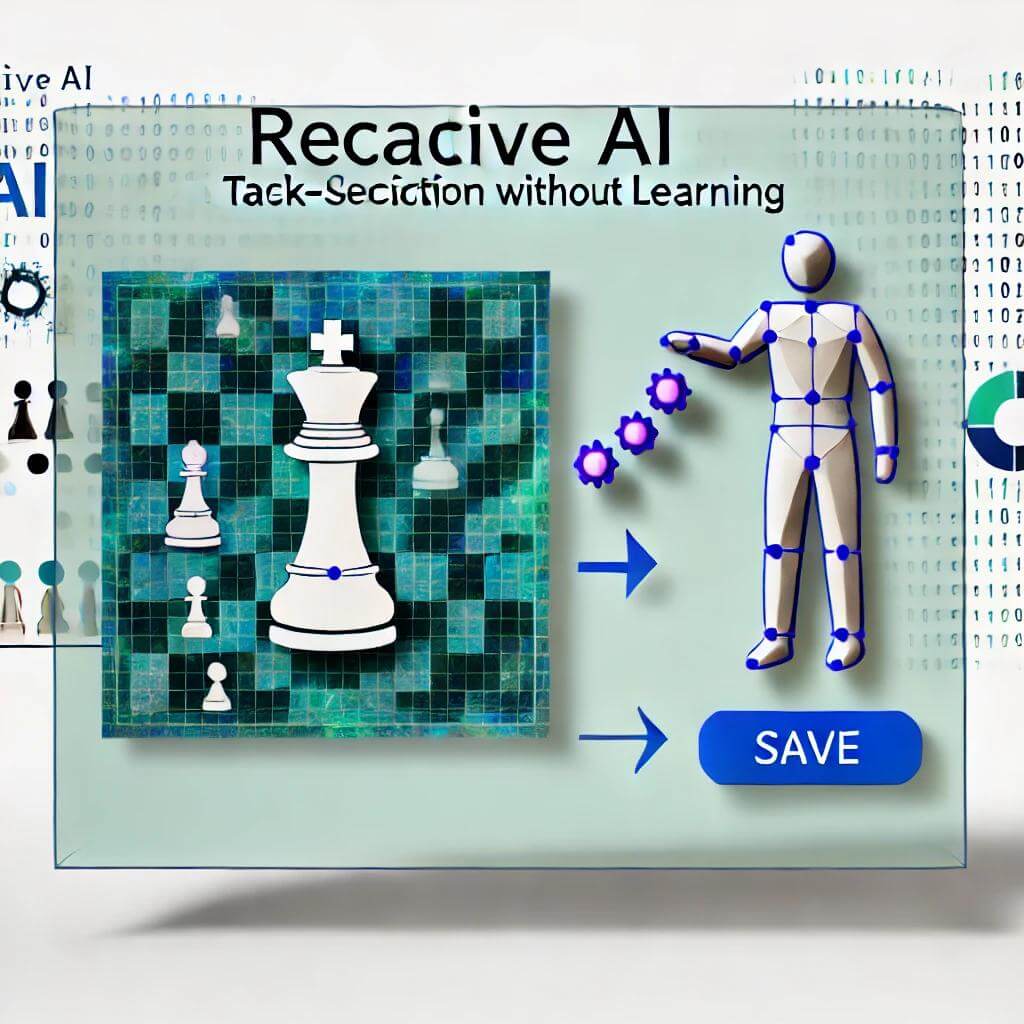The State of Narrow AI: Where We Are Now
What Is Narrow AI?
Narrow AI is designed to perform a single, specific task or set of tasks. Whether it’s facial recognition, language translation, or responding to your voice commands, Narrow AI excels at these functions but doesn’t go beyond them. It doesn’t understand context, nor can it generalize across multiple domains like a human can. For this reason, it’s often referred to as Weak AI.
How Narrow AI Works
At its core, Narrow AI relies on machine learning algorithms and data processing to perform specific tasks. It doesn’t “think” like a human but follows patterns and rules that it has learned from large datasets. For instance, a virtual assistant like Siri uses voice recognition to interpret your command, processes it using AI algorithms, and then delivers a response.
Common Examples of Narrow AI:
- Voice assistants like Siri and Alexa
- Recommendation systems on platforms like Netflix and Amazon
- Autonomous vehicles that use AI to navigate and avoid obstacles
- Chatbots that assist in customer service interactions
- Image recognition systems like Google Photos that categorize pictures
Common Applications of Narrow AI
You might not realize it, but you encounter Narrow AI multiple times a day. It’s embedded in some of the most popular technologies we use today.
Self-Driving Cars
One of the most advanced applications of Narrow AI is autonomous vehicles. These cars rely on sensors and AI algorithms to interpret the environment around them. From identifying pedestrians to reading street signs, the AI controls the vehicle’s movement but can only operate within the domain it’s trained for—driving.
Recommendation Systems: Netflix, Amazon, and More
Whenever you open Netflix or Amazon, the platform immediately recommends shows or products you might like. These recommendations are driven by AI that analyzes your behavior, searches for patterns, and suggests similar content.
Table: AI in Recommendation Systems
| Platform | AI Application | Example Functionality |
|---|---|---|
| Netflix | Content recommendation | Suggests TV shows and movies based on viewing history |
| Amazon | Product recommendations | Suggests products based on past purchases |
| Spotify | Personalized playlists | Recommends songs based on listening habits |
Limitations of Narrow AI
While Narrow AI is incredibly powerful at performing specific tasks, it has significant limitations. These systems are not self-aware and lack the ability to adapt to new situations outside of their programmed scope. In other words, they are narrow in their functionality and weak compared to the broader aspirations of General AI.
No Cross-Domain Generalization
Unlike a human who can learn and adapt across various domains, Narrow AI cannot generalize beyond the specific tasks for which it was trained. For example, a language translation AI cannot suddenly start driving a car, and an AI used for recognizing images can’t answer questions about politics.
Requires Human Supervision
In many cases, Narrow AI still requires human oversight. For example, self-driving cars, while advanced, often need a human driver to take over in complex situations. Similarly, customer service chatbots may not always have the correct responses and require escalation to a human agent.
Real-World Examples of Narrow AI
The AI systems we use today can perform impressive tasks, but they remain constrained by their design. Let’s look at some real-world examples of how Narrow AI is used across different industries.
Siri, Alexa, and Google Translate
One of the most common uses of Narrow AI is in virtual assistants. Siri, Alexa, and Google Translate are excellent at understanding your voice and processing your commands, but their abilities are limited to the specific tasks they were trained to do.
- Siri: Can set reminders, answer factual questions, and play music, but it won’t understand nuanced conversations.
- Alexa: Can control smart home devices, but its knowledge is confined to pre-programmed responses.
- Google Translate: Can translate sentences between languages, but it struggles with complex context and idiomatic expressions.
Autonomous Vehicles
AI-powered vehicles like Tesla’s Autopilot system use Narrow AI to interpret real-time data from sensors and cameras. These systems help the car navigate, avoid obstacles, and make driving decisions. However, their limitations become evident when they encounter unpredictable situations that require human judgment.
The Future Potential of Narrow AI
While Narrow AI is limited in scope, it is constantly evolving. Advances in machine learning and data processing mean that Narrow AI systems are becoming more efficient and capable. But the big question is: Will Narrow AI evolve into something more comprehensive?
Expanding Capabilities
Narrow AI may evolve by expanding its capabilities within its specific domains. For example, virtual assistants might gain more functionality to perform more complex tasks or become better at understanding human context. Additionally, as AI systems accumulate more data, they will likely become more sophisticated in their decision-making abilities.
Industry Trends and the Role of Narrow AI
Narrow AI is already making a massive impact in industries such as healthcare, finance, and transportation. For instance, AI-powered diagnostic tools are helping doctors analyze patient data, while AI-driven algorithms are optimizing financial markets. In the short term, we’re likely to see continued advancements in Narrow AI’s ability to perform specific tasks more accurately and efficiently.
Conclusion
Narrow AI, while often termed as Weak AI, is anything but weak when it comes to specific tasks. Whether it’s assisting with customer service, recommending the next show to watch, or even driving a car, Narrow AI has proven its value. However, it remains confined to its narrow domains and lacks the broader generalization of human intelligence. As the technology continues to evolve, we might see more advanced applications of Narrow AI, but for now, it remains a critical tool in shaping the future of industries and daily life.




Post Comment